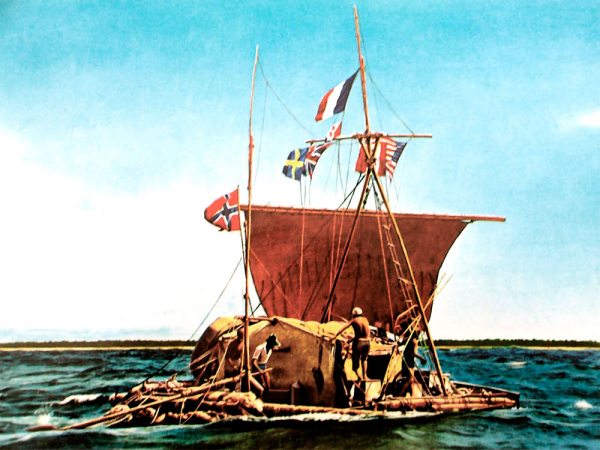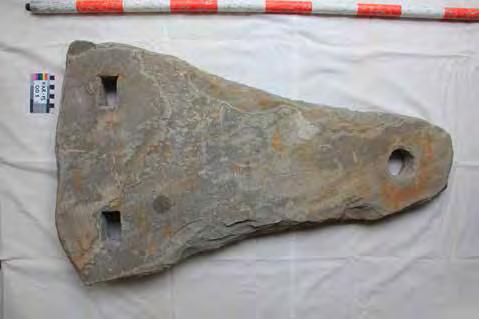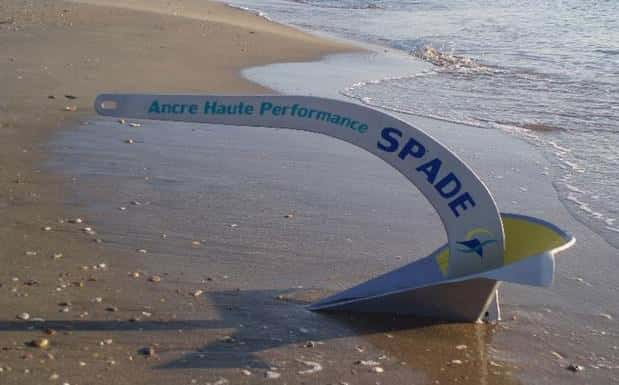EVOLUTION OF THE ANCHORS

This post is also available in:
 Español
Español
Today we will talk about the evolution of anchors throughout history. An element that has always accompanied our boats accompanying the evolution of shipbuilding and the movement of peoples through the sea and the great navigable rivers. And to know the history of anchoring, anchoring and how the anchoring maneuver has changed over the centuries, we have the knowledge of experts, V de Bravado, the Premià de Mar dry dock and the best dry dock in Catalonia. At V de Bravado they know a lot about boats and they have explained many things to us on this exciting topic.
Anchor Origins
The origin of the anchor is lost in time. But we can safely say that it is as old as navigation itself. The first anchoring maneuver required an anchor. The general opinion is that the Chinese invented it around 3000 B.C. and there is evidence that the Egyptians already knew it in 2600 B.C.
Thor Heyerahal’s investigations of the Tigris and the Persian Gulf seem to indicate, in fact, that the first anchors appeared in the region around 5000 B.C. Although its appearance was quite far from the current ones. They were primitive baskets with stones, sandbags or anything that gave it enough weight. These were tied to the hull by means of ropes, thus avoiding the displacement of the ship by friction against the bottom.

The first stone anchors
On the island of Sicily were found the first stone anchors made with a hole through which they were tied and some slits to fix the root knot. This type of anchor had an acceptable performance for the stone bottoms, since in the sandy ones it clawed very easily.
The second step is supposed to have been to find an anchor for mud or sand bottoms. They would take a flagstone and drill two or three holes in it where they put through wooden stakes through both sides. These were nailed to the bottom increasing the grip.
The Egyptians, on the other hand, made two perpendicular holes between each other. Stakes passed with the pointed ends forming a right angle. They braided the whole set with reeds.
Later, a more advanced step was to take a triangular-shaped stone (conical, pyramidal, or conical trunk) with a hole in one vertex for the cape and two others in the base for the stakes.
Later we already found an anchor based on a stone, usually elongated or conical, contained in a wooden frame. At the apex, a corporal held it to the boat and, at the base, two cross stakes made nails. This type of anchoring is still used today in many places where sailing is still a working medium.

Lead Anchor Appears
Later, civilizations like the Egyptian or the Phoenician used lead to make their anchors heavier. For example, the Genoa Museum conserves anchors made of two cross-shaped hardwood wedges, drilled and filled with lead.
Some historians of the time say that the bare or bare anchor was used on shallow, sandy bottoms. To increase grip, a sailor was sent to the bottom to bury her. So it becomes evident that his weight was reduced.

The evolution towards iron anchors
Towards 600 B.C. Egyptians and Persians began to use the iron anchor in the anchoring maneuver. At first they were one-armed and then another was added, as we know them today.
Iron was first used for the reed, and the arms were riveted, cast, or bolted to the end of the reed. Shovels and nails were also made of iron and riveted to the arms. These elements were easily lost since, when they got stuck at the bottom, they were simply pulled to make them break free, thus sticking the arm or the nail. The one-piece anchor was quickly followed by the detachable one.
Its evolution was constant throughout the centuries. Acquiring constant improvements. Towards the end of the 18th century, the anchor arms acquired a curved shape and, thanks to improvements in the manufacturing process and the quality of the iron used, they became stronger. Around the same time the wooden stocks were replaced by an iron one. To the advantage of being more resistant was added the possibility of sliding to be twinned to the cane, which facilitated stowage. Thus, by the middle of the 19th century, an anchor with certain dimensions and shape was reached, which became known as the Admiralty patent anchor.

The modern anchor
Towards the end of the 19th century, Trotman introduced a great advance with the anchoring with movable arms placed in such a way that they were nailed to the bottom both at the same time. It also had the advantage of not using a stocks, which facilitated stowage.
Later, in 1933, F.S. Taylor invents the C.Q.R. or plow anchor. It has the advantage of not having a clamp and, even if it falls to the bottom, the slightest tug on the chain still makes it take the correct position and its two nails are nailed. It holds approximately twice as much as any other of equal size, although due to its shape it is not used in large ships.

And soon after, the Danforth appears, with stocks on the cross and nails with large blades. It is used for smaller boats. Perhaps it is the most widespread today. There are several models (fungus, crampin, articulated grating, etc.) that are used depending on the funds.
And so we end this brief history of anchors with the advice of V de Bravado, the Premia de Mar dry dock and the best dry dock in Catalonia.
